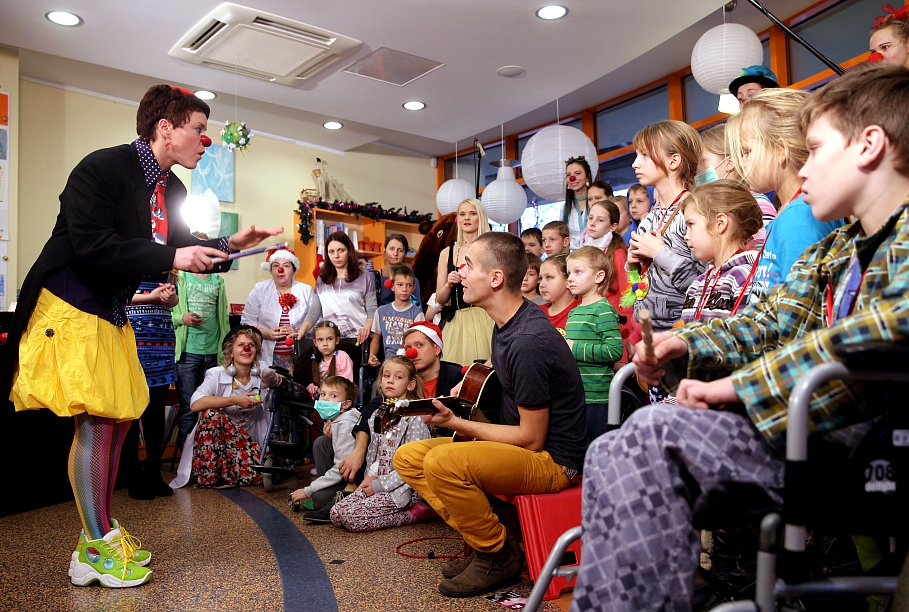The so-called 'Doctor Clowns' are volunteers who attend children's wards in hospitals to raise the spirits of the young patients with a strong dose of laughter, to be delivered orally several times a day.
As LTV reported Monday, there are currently 28 Dr Clowns operating in Latvian hospitals, with a further 20 undergoing training in the comic and medical arts to further swell the ranks.
According to Marianna Milovska, who runs the Dr Clown project, as well as winning over scores of young fans on the wards, the clowns have also convinced the real doctors of their worth, some of whom may have been initially skeptical about the medical benefits of a custard pie in the face.
"We've now reached the stage where the medical staff refer to our clowns as colleagues, which I think is really positive," Milovska said, adding that as well as lightening the mood in the wards, clowns can serve a useful role in various medical procedures such as in calming the nerves of children before an operation.
As well as a desire to help and an ability to cheer everyone up, clowns also need to be (as any comedian knows) perceptive psychologists, able to read their audience and adapt their behavior accordingly, she explained.
Now the bedside jokers are into their third year, despite being funded entirely by charitable public donations.
The team of clowns operates on a daily basis, in regional hospitals as well as Riga, and requires an annual budget of around €60,000 to keep its exploding jalopy on the road.
Consequently a donation drive is currently underway with members of the public able to give money at the checkouts of Rimi and Super Netto supermarkets and via charity donation website Ziedot.lv.
Indeed such is the popularity of the project that there is now a six-month waiting list to become a clown, suggesting that before too long it may be possible to fill the time waiting to become a clown by studying for a medical degree.
Once training is complete and the tricky art of the pratfall has been perfected, it's simply a matter of taking the Slapstickratic oath and donning the coveted red nose of the clowning profession to spread hilarity through the hospitals.
If you would like to support the Dr Clown project, you can make a donation HERE.




























